Sasanian Empire › Bible » Ancient origins
Articles and Definitions › Contents
- Sasanian Empire › Antique Origins
- Bible › Antique Origins
Ancient civilizations › Historical and archaeological sites
Sasanian Empire › Antique Origins
Definition and Origins
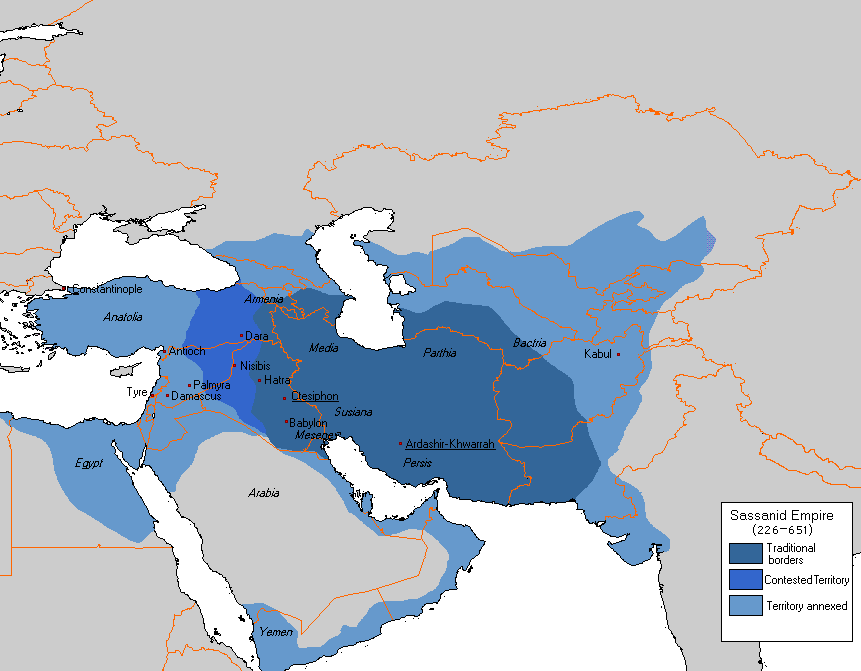
The Sasanian Empire (also spelled Sassanian, Sasanid or Sassanid ) was the last pre-Islamic Persian empire, established in 224 CE by Ardeshir I, son of Papak, descendant of Sasan. The Empire lasted until 651 CE when it was overthrown by the Arab Caliphate. It is considered by the Iranian people to be a highlight of their civilization, for after the fall of the Achaemenid Empire at the hands of Alexander the Great in 330 BCE until the fall of the Parthian Empire, there was not be another state that truly felt ”Iranian".
After Alexander 's death in 323 BCE, the Iranian Plateau fell into the hands of Seleucus I Nicator, one of the Diadochoi (Alexander's generals). He established a Hellenistic state known as the Seleucid Empire, mainly on what is today the Islamic Republic of Iran, although at its height the Empire extended from modern-day Turkey to modern-day Pakistan. The Seleucids, although certainly influenced by the Iranian people over whom they ruled, still kept true to their Greco-Macedonian origins and hence were not seen as native rulers by their subjects.
By 155 BCE, the Parthians had conquered all of the Iranian territories of the Seleucid Empire. The Parthians, a group of Northeastern Iranians, who, although certainly refreshing to their Iranian subjects, were still heavily influenced by Hellenistic culture. They are mostly known to the European world as antagonists of the Roman Empire, and their culture is often neglected in history books. The Parthians themselves fell to Ardeshir I, who was a Persian for he came from the province of Fars (originally known as Pars, which is where the word Persian comes from) from where the Achaemenids came. He installed his own dynasty under the family name of his forefather Sasan.
The Sasanians then started a process that would reinstate the values of Iranian culture. Although certainly still Hellenized, the Sasanians started a process of "Iranization" unlike the Parthians before them: Zoroastrianism became one of the founding stones of the Empire -- nevertheless religious minorities such as Jews, Christians, Manicheans, and other faiths of the Iranian people would play an important part. Some of the Sasanian kings even married Jewish and Christian women.
For 400 years the Sasanian Empire was the major power in the Near East as the rival of the Late Roman Empire. Not only that, but they sustained relations with the Tang Dynasty of China and several Indian Kingdoms where their products and culture were held in high esteem.
NOTABLE MONARCHS OF THE SASANIAN DYNASTY
The Sasanian family has several possible origins related to the genealogy of the dynasty's founder Ardashir I who was born in 180 CE. These origins either link him to the Achaemenids or the Kayanids, both important to the Iranian identity. The first is a historical empire and dynasty, and the second is a mythological dynasty of kings deeply related to Zoroastrianism and Iranian mythological tradition.
Ardashir I, (180-240 CE, r. 224-240 CE) gave special importance to three things: centralization of power, installing Zoroastrianism as a state religion, and paying attention to the Persian rivalry with Rome. This all meant big reforms.Centralization was an especially enormous task since the Parthians had kept a federative alliance of small kingdoms.Zoroastrianism, although always present, was now to be linked to the Empire's organization and became of great importance to the administration system, especially since the legitimacy of the system established by the Sasanians was based on their divine lineage. The wars with Rome at first seemed stagnant, being a game of push and pull between the two Empires mostly in Mesopotamia and Armenia. Already reigning with his son Shapur I, it would be the task of Shapur I to end this war.
Shapur I, (215-270 CE, r. 240-270 CE) was a king mostly important for his ability to reaffirm Sasanian power in Iran and for his military prowess in fighting Rome. Although through most of the Sasanian Empire's history there would be a push and pull game in Mesopotamia and Armenia, Phillip the Arab ( Roman Emperor, r. 244-249 CE) would concede to Shapur I in order to secure his power over Rome, signing a treaty that would hand Armenia to Persia. The Persian king, seeing the current weakness of the Roman Empire, continued his attacks and dealt a special blow to Roman morale by capturing Roman Emperor Valerian. The information provided by the Šahrestānīhā ī Ērānšahr ("Provincial Capitals of Iran") indentifies Shapur as a prolific city founder, which seems to have been the start of the Sasanian policy of urbanization identified by Touraj Daryaee in Sasanian Persia: The Rise and Fall of an Empire ( 2009).
Shapur II, (309-379 CE) had the curiosity of having being crowned king in his mother's womb. His father was murdered and the nobles who were taking power decided to crown the unborn baby. He proved to be a rather energetic leader, taking the Empire to its largest extent, taking advantage of the weakened Roman Empire.
REIGN OF KHOSRAU I
SUCCESSFUL IN BOTH MILITARY AND ADMINISTRATIVE DUTIES KHOSRAU WOULD BECOME THE IRANIAN IDEAL OF A KING.
Khosrau I (501-579 CE, r. 531-579 CE) is the most important and famous of the Sasanian kings. Successful in both military and administrative duties, he would become the Iranian ideal of a king. He would also feature prominently in Iranian literature. Khosrau's reforms were probably what continued to sustain the Sasanian Empire for the next 100 years. His tax reforms strengthened the court by eliminating the special privileges of the Grandees or Wuzurgans who ruled over their territories and who were able to tax the population and not tax themselves. By reforming this system, the state was able to provide a fixed tax that would help predict the amount of income received. Many of these reforms are believed by Touraj Daryaee to be former projects of his father Kavadh, during whose reign massive revolts and the appearance of Mazdakism (a lower class favoring cult) were encouraged by Kavadh to weaken the nobles.
The military saw great reforms as well, mostly directed at addressing the many borders of the Empire. The Empire had the Romans to the west, the Huns to the east, and the Arabs to the south, all of which required a military capable of reacting quickly, so the Empire was divided into four regions, each controlled by a general. As for most Sasanian kings, the wars with Rome continued in an endless push and pull, mostly favorable to the Sasanians, as the Romans and then the Byzantines would be busy with the Germanic invasions.
Probably the most important of Khosrau's achievements was seeking knowledge and the special attention given to the Academy of Gundeshapur. This academy was one of the most important centers of learning in the world's history as it sought texts from all of the neighbouring countries, from Greek philosophers, to Iranian religious texts, and Indian works as well, translating them not only to Middle Persian but also Greek and other languages -- a scholarly knowledge later inherited by the Arabs, and then passed to European Culture.
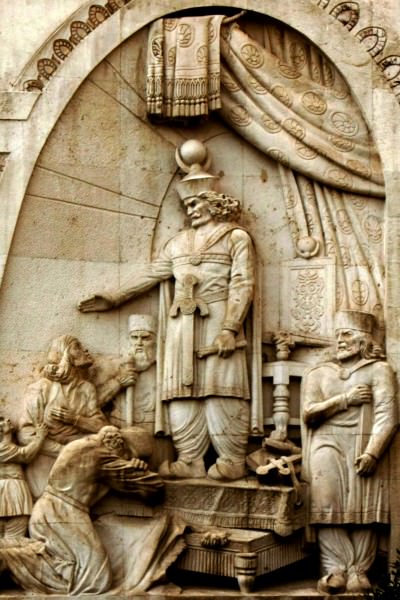
Statue of Khosrau I in Tehran courthouse
YAZDGIRD III - THE LAST SASANIAN KING
The last Sasanian king, Yazdgird III (624-651 CE, r. 632 to 651 CE) ascended the throne when he was only eight years old.Due to the chaotic situation of the Empire, the king was actually crowned not in the capital but in the province of Persis, the original home of the Sasanian dynasty. He ruled during the time of the Muslim invasion of the Sasanian Empire and had to move from province to province in order to gather resources and be able to fight against the invading Arabs.
During 629 to 630 CE, the Sasanian Empire suffered the loss of Yemen, Oman, and Bahrain; soon after, in 633 CE, the Sasanian client state of Hira was taken as well and thus a buffer state between the Iranians and the Arabs was removed. In 633 CE the Sasanian army was defeated by the Muslim army at the battle of D'at al-Salasel. More defeats followed and by 634 CE, Sawad (the name used in early Islamic times for southern Iraq) came under Muslim control. In 636 CE at the battle of Madār, Sasanian forces completely lost southern Mesopotamia to the Arab army. Finally in 637 CE the battle of Qadisiya took place in which the Iranian general Rustam ī Farroxzad and most of his army were killed.
The king fled the capital and moved toward Ray, but soon after, in 640 CE, the Arabs managed to take over the heartland of Iran and the king had no choice but to move further toward the east. After the serious insurrections of the eastern provinces of Sēstān and Kermān also resulted in defeat, the ruler (Marzbān) of Marw refused to help the runaway king. Yazdgird III is believed to have been murdered by a local miller near Marw in 651 CE.
The Sasanian empire came under Arab control, but Persian remained a cultural force in the the emerging Muslim world.
Bible › Antique Origins
Definition and Origins
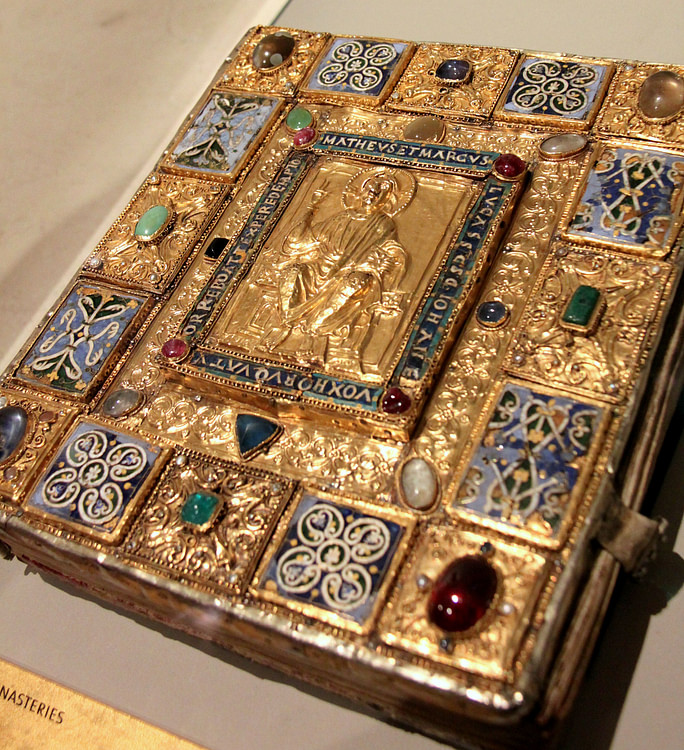
The Bible takes its name from the Latin Biblia (book or books) which comes from the Greek Ta Biblia (the books) traced to the Phoenician port city of Gebal, known as Byblos to the Greeks. Writing and books became associated with Byblos because it was an exporter of papyrus used in writing)and the Greek name for papyrus was bublos, linking the city with the written word.Although the Bible is often considered a single, cohesive, work, it is actually an anthology of ancient writings by many different authors over many centuries which were collected in a single book. The Bible contains works of poetry, religious-themed narratives, philosophical musings such as The Book of Ecclesiastes, epistles, and the apocalyptic masterpiece known as The Book of Revelation.
The common thread all these collected works have in common is the existence of an all-powerful deity who is the creator of the universe and has an interest in the personal lives and final fate of human beings. The books of the Christian Bible were arranged in the sequence one finds them in today to tell the story of the creation of the world by a supreme deity, the fall of man from paradise, and humanity's redemption by the Son of God but these books were not written in that sequence nor would the original authors of the Old Testament works have had that particular story in mind. The Bible of Judaism (collected and authorized by c. 3rd century BCE) contains the Torah (the first five books of the Bible) and the Tanakh (the stories of the judges and prophets) and makes no mention of Jesus Christ. The God of the Bible in these works is the God of Judaism - a single all-powerful deity - and, prior to the approptiation of Hebrew scriptures by early Christianity, the stories which made up the Bible told the story of God's care for and intervention in the affairs of the Israelites of the Middle East.
STRUCTURE OF THE BIBLE
In Judaism the scriptures are called the Tanakh and are recognized as comprising twenty-four books divided into three categories: The Pentateuch (or Teachings of the Five Books of Moses ) The Prophets, and The Writings. Christianity, which appropriated the Tanakh and claimed it as their own early theological history, call it the Old Testament. Early Christian writers, years after the probable date of the death of Jesus, penned the gospels and The Book of Acts. Paul the Apostle wrote most of the epistles which make up the twenty-seven books of the Christian New Testament and whose theology informs the gospels. The Book of Revelation, attributed to John of Patmos, is the last book of the Christian Bible.
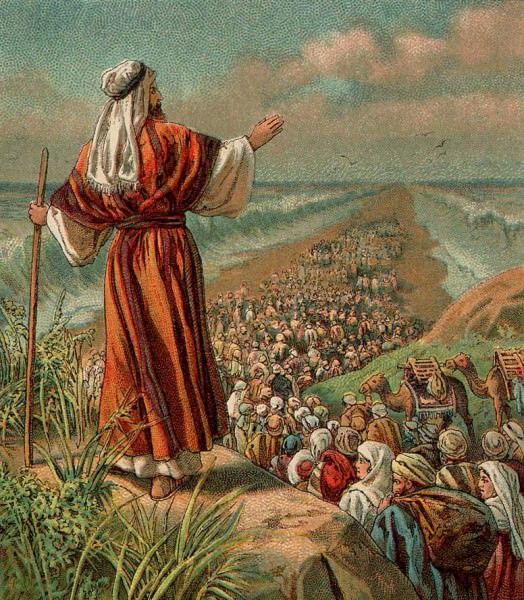
Moses & the Parting of the Red Sea
BRIEF SYNOPSIS & COMMENTARY
The book of Genesis, the first book of the Old Testament, tells the story of the creation of the universe, the world, and humanity, the fall of man in the Garden of Eden, and the great flood which God sent on the world because of the evil of mankind. Following the flood, Noah's children re-populate the earth and the narrative then follows the stories of his descendents who are the Hebrew ancestors of the men who wrote the stories. The tale of Joseph and his coat of many colors brings the Hebrews from their land of Canaan to Egypt where, the Book of Exodus explains, they became slaves. They were led from Egypt to freedom by the great lawgiver Moses who then passed his leadership to his second-in-command Joshua son of Nun whose army lay waste to the region of Canaan so the Hebrews could claim it as the land promised to them by their God (as told in the Books of Joshua and Numbers). Following the establishment of the people who called themselves Israelites in the land, famous kings such as David and his son Solomon ruled and great prophets such as Jeremiah and Isaiah, Ezekial and Jonah preached the will of their God.
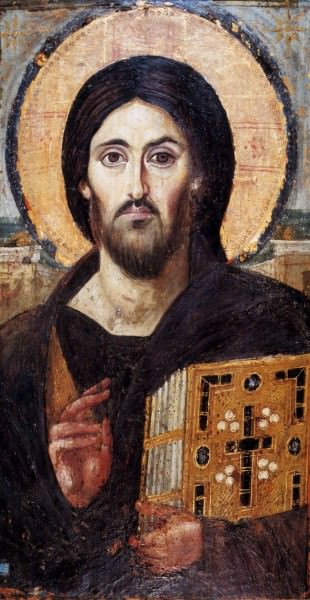
Jesus Christ
The New Testament focuses on the life and teaching of Jesus Christ, the son of God sent to redeem humanity from sin. Jesus is born of the virgin Mary and begins his ministry, preaching a direct and personal relationship with God, when he is about thirty years old. He is betrayed by one of his followers and crucified by the Romans for inciting sedition. Three days after his death, he rises from the grave and acends to heaven to rule at the right hand of God the father. In his place, he sends the Holy Spirit who will henceforth minister to believers on earth. The New Testament ends with the vision of the end of the world as told by John of Patmos.
The first four books (Matthew, Mark, Luke, and John) are often believed to be eye-witness accounts of Jesus' ministry on earth but are not. The practice of writing under a famous person's name or, at least, attributing what one had written to someone better known, was well established at the time the gospels were written and it is probable that the authors chose the names of people who were already well respected in the Christian community to gain a wider acceptance of the material. Because the gospels come before the Book of Acts and the Letters of Paul in the New Testament many people seem to believe that these works were written first and the events they relate happened earlier than the later books; actually, the reverse is true. The letters of Paul came first and the gospels were written later.
THE STORIES WHICH THE BIBLE RELATES WERE CONSIDERED TO BE HISTORICALLY ACCURATE & UNIQUE UNTIL THE 19TH CENTURY CE WHEN ARCHAEOLOGISTS DISCOVERED THE CIVILIZATIONS OF MESOPOTAMIA & EGYPT.
Between 42-62 CE the apostle Paul traveled throughout the Mediterranean on his evangelical missions preaching the new religion of the risen Christ. The Bible itself in the Book of Acts and I Peter allude to the possibility, explored in depth in the late 19th and early 20th century, that Paul's version of Christianity was different from the message preached by Jesus of Nazareth. Paul (formerly Saul) of Tarsus was a Jewish pharisee of Tarsus (in modern day Syria ) who claimed to have received a vision from God which convinced him of the reality of Jesus Christ as the risen son of the creator of the universe sent to earth to die for the sins of man. While many people have since considered this a miraculous occurrence which displays God's love for humanity through the sacrifice of his son, the concept of the dying and reviving god figure was well known in Paul's time and it is probable that beliefs such as the Cult of Isis informed the basis of Paul's religious views. The understanding of the Bible between the time of Constantine 's elevation of Christianity to the religion of Rome (4th century CE) and the next few hundred years was relatively unchanged but, in the 19th century CE, biblical interpretation underwent a radical reformation.
BIBLICAL UNDERSTANDING & 19TH CENTURY ARCHAEOLOGY
The stories which the Bible relates were considered to be historically accurate and entirely unique until the mid 19th century CE when archaeologists discovered the civilizations of Mesopotamia and Egypt. The Bible, in fact, was considered the oldest book in the world until much older literature was discovered which told the same stories, in an earlier form, than those found in the Bible. Scholars had long known that the Bible was a compilation which had been gathered from earlier works and authorized under the Bishops of Rome but no one seemed to be aware that those works were drawn from even earlier pieces.No one could read Egyptian hieroglyphics until Jean Jacques Champollion (1790-1832 CE) deciphered them and the literature of Sumer was completely unknown to the modern world.

Model of Herod's Renovation of the Temple of Jerusalem
In the mid-19th century CE museums and publications sent archaeologists from the west to the region of Mesopotamia to find physical evidence which would substantiate biblical narratives. The 19th century CE was an interesting period for religion in the west, especially Christianity, in that people became more vocal in their criticism of the faith and new ideas and philosophies provided for acceptable alternatives to religious belief. Charles Darwin's On the Origin of Species By Means of Natural Selection was published in 1859 CE and challenged the traditionally held belief in the creation of humanity by an all powerful God. The Bible claimed that God had made man "a little lower than the angels"(Psalm 8:5) while Darwin was claiming humans evolved from lower species. In 1882 CE the German philosopher Nietzsche published his work The Gay Science which famously argued "God is Dead - and we have killed him." Nietzsche's line is almost always taken out of context as a defiant repudiation of religion but, actually, he was only saying that advances in technology and knowledge throughout the 19th century had rendered the concept of God obsolete. Partly in response to such claims, museums and predominantly Christian societies in the west sent these teams of archaeologists to Mesopotamia to find hard evidence of the truth of the Bible.
What they found instead was the ancient civilization of Mesopotamia and the rich literary heritage which had been buried under the sands for centuries. Iconic stories such as the Fall of Man and the Great Flood, they found, were not unique to the Bible at all but had already been written down centuries before the Hebrew scribes revised them in their own work. The great law code of Moses, thought to be the first in history, was discovered to have had a predecessor in the Law Code of Ur-Nammuand the more famous Code of Hammurabi.
Excavations in Egypt, meanwhile, found no evidence for the story of the enslavement of the Hebrews under the pharaoh of Egypt nor any for the other details found in the Book of Exodus. Once ancient Egyptian hieroglyphics were able to be read, the myths of Egypt were found to have similarities to the Christian figure of the dying and reviving god and Mary, the mother of Jesus, to have taken on many of the attributes and epithets of the Egyptian goddess Isis. As stories of these discoveries became more widely known, belief in the Bible as the word of God began to change to an understanding of the work as inspired by God or as scripture written by inspired men.
CONCLUSION
Although many people throughout the world today continue to believe in the Bible as the authoritative word of God, this belief is not as widespread as it was prior to the 19th century CE. The interpretation of the Bible in the present day is largely a matter of individual understanding without the societal expectation which informed western society prior to the work of scholars, archaeologists, and historians in the 19th century CE. These individuals changed the world by radically revising people's understanding of history and the Bible and opening up avenues of inquiry which greatly broadened human knowledge. The revised understanding of the Bible and its place in history upset many people at the time and continues to in the modern day but, to many others, the beauty of the Bible's language and the grand vision of redemption it presents is undiminished by the revisionist revelations of the 19th century CE. The Bible continues to inspire and encourage people around the world, translated into every language, and remains the best-selling book of all time.
LICENSE:
Article based on information obtained from these sources:with permission from the Website Ancient History Encyclopedia
Content is available under License Creative Commons: Attribution-NonCommercial-ShareAlike 3.0 Unported. CC-BY-NC-SA License